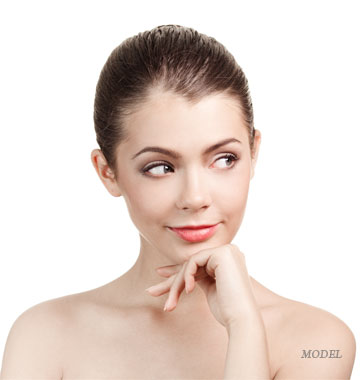Whether used as an adjunct to surgical procedures or as a conservative option for facial rejuvenation, non-surgical treatments for facial concerns are popular and effective. As opposed to cosmetic surgical procedures that excise excess skin and wrinkles, non-surgical treatments refine, modify, and enhance the skin rather than remove it.
Botox
Botox has a number of medical applications such as treatment of abnormalities of eye muscles, migraine headaches, muscle tightness, and excessive sweating. It can also be used to treat facial wrinkles, especially in the upper half of the face where wrinkles are caused by the activity of facial muscles. The severity of lines and creases of the forehead, the corners of the eyes (“crow’s feet” or “laugh lines”), and between the eyebrows (“frown lines”) can be temporarily reduced and softened. It can even provide a slight lift to the brow when applied skillfully.
Botox can be administered safely every three months. A regular schedule provides the best long-term results and usually permits gradual lengthening of the treatment interval. Botox is safe and most people are good candidates for treatment. Women who are pregnant or are breast-feeding and people with neurological conditions should refrain from Botox.
